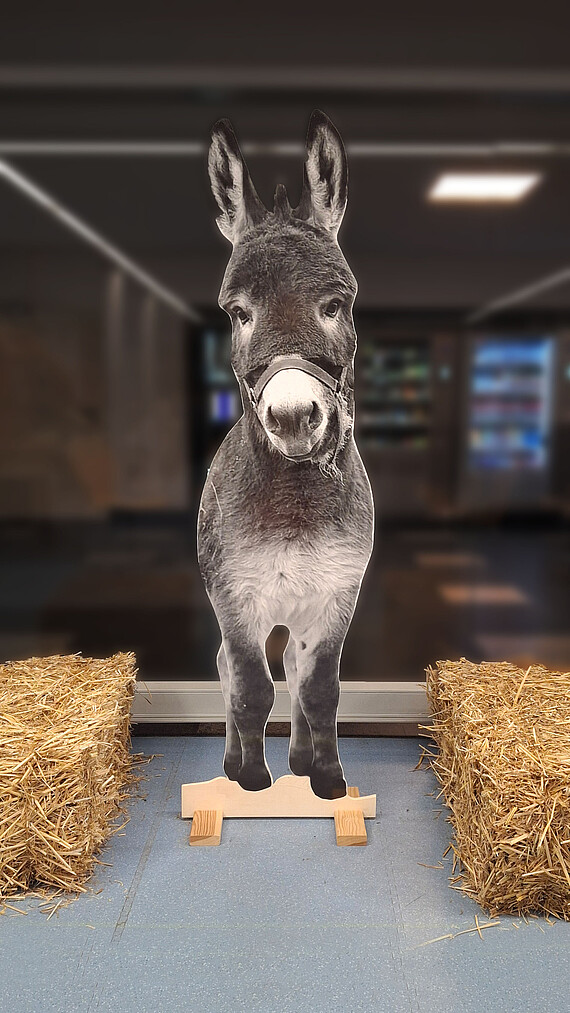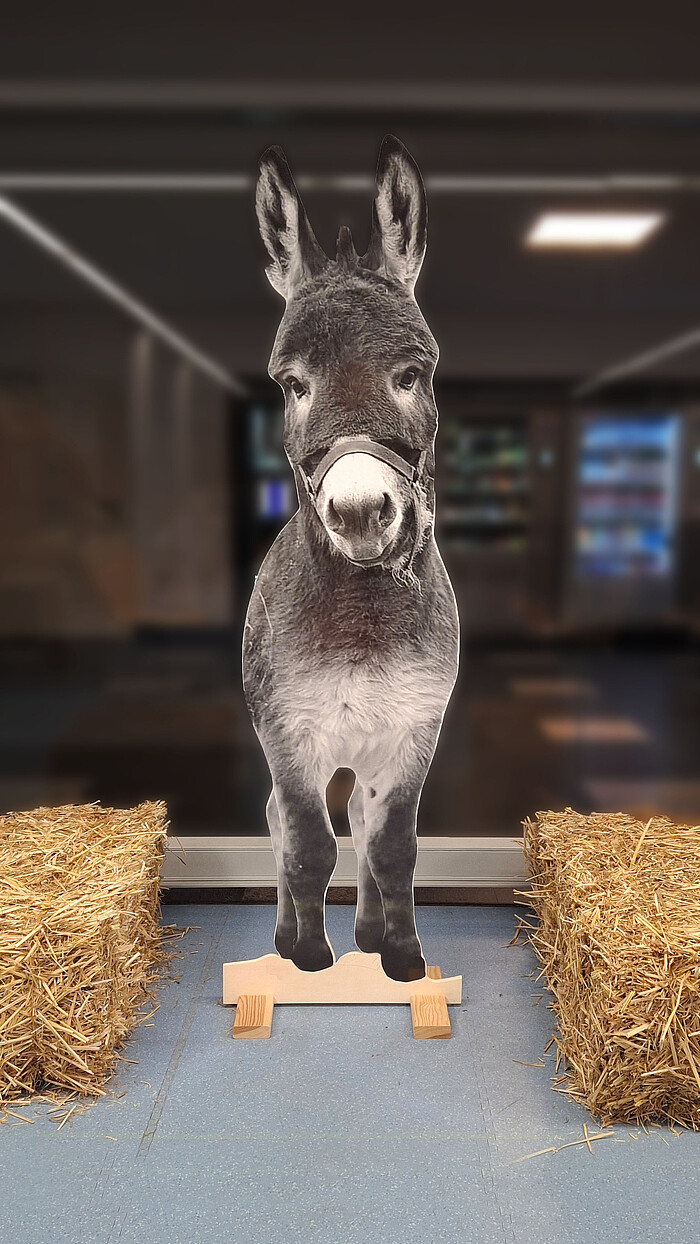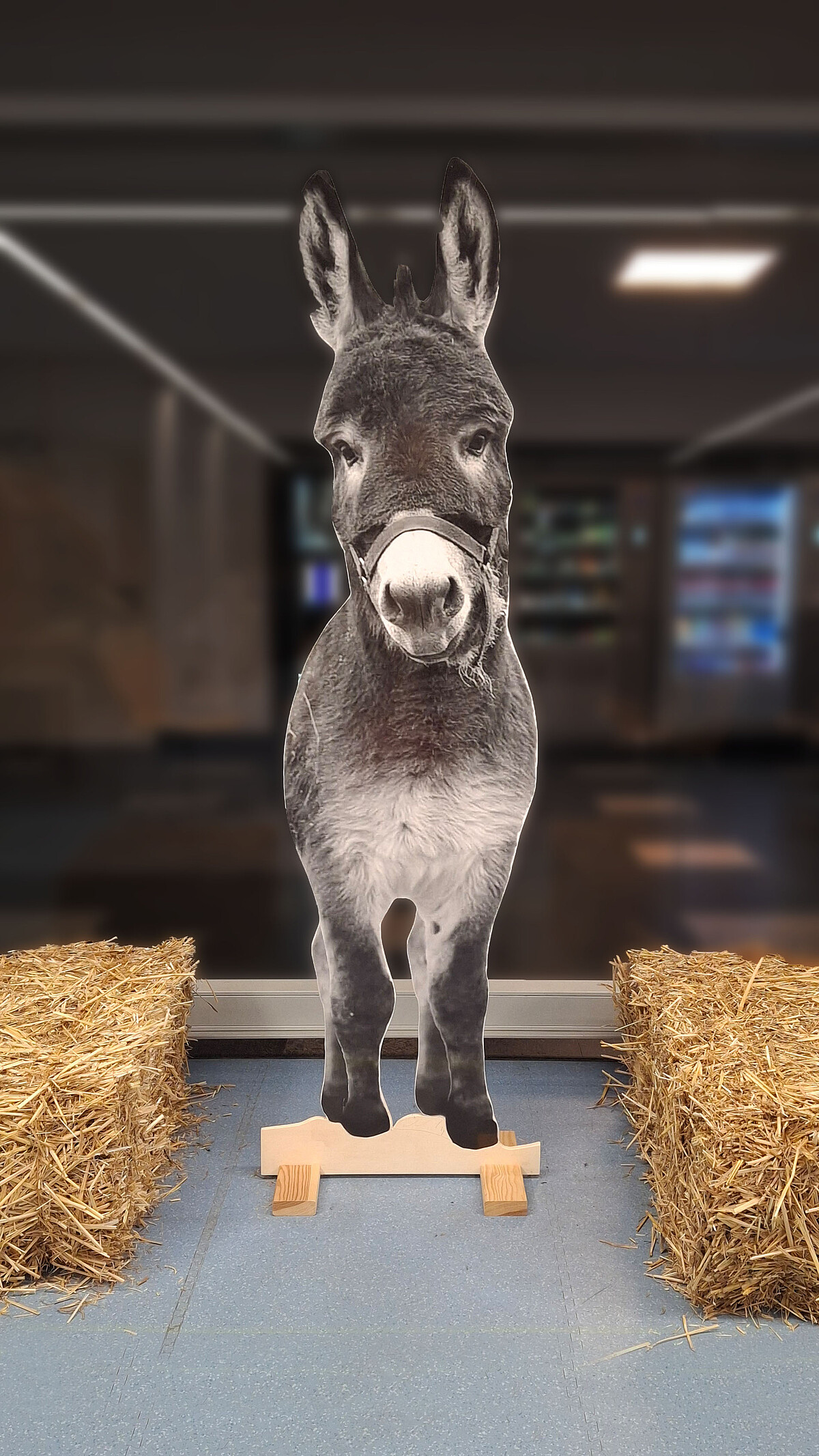How does one choose when there are no reasons to do so? Aristotle (384–322 BC) maintained a deterministic view: if decisions are made on a purely rational basis and there is no difference between the alternatives, free will appears to be blocked. In the parable: the donkey would starve because it is incapable of making a decision.
Leibniz used the parable in his “Theodizee”. According to Leibniz, the donkey will always make a decision and not starve, even if it cannot itself comprehend the reasons for this decision. Rationality always leads to finality, said Leibniz. A difference that can be comprehended intellectually has to exist simply based on natural law, because the world as a whole cannot be “divided into two halves by a vertical plane through the middle of the donkey”. Even the inner organs of the animal are asymmetrical.
“There will therefore always be many things within and outside of the donkey, even if we do not notice any of them, which drive him to go to one side rather than the other. […] Of course, this reason may be very complex and incomprehensible to us; because the chain of interconnected causes extends very far.” G.W. Leibniz, Theodizee, p. 122
Accordingly, free will is influenced by so many factors (“perceptions”) – within and outside the donkey – that equality does not exist in the world of valid natural laws and complex systems. So how free is our will and what influences/determines it? This is a debate that continues today in various research disciplines.
1 Although the parable is named after the French philosopher Jean Buridan, it is unclear whether he actually used it himself. His writings contain similar examples with a wanderer at a fork in the road or a dog between two sources of food.



Further information and Communications and Marketing contact person
30167 Hannover








